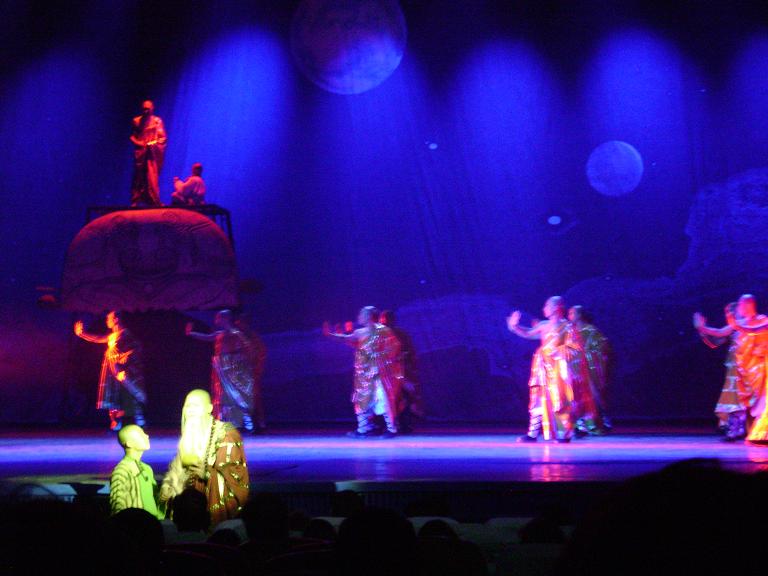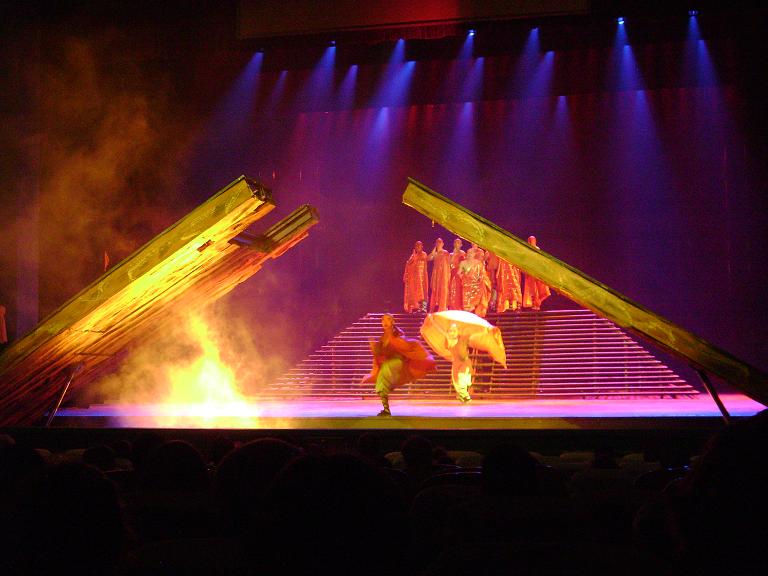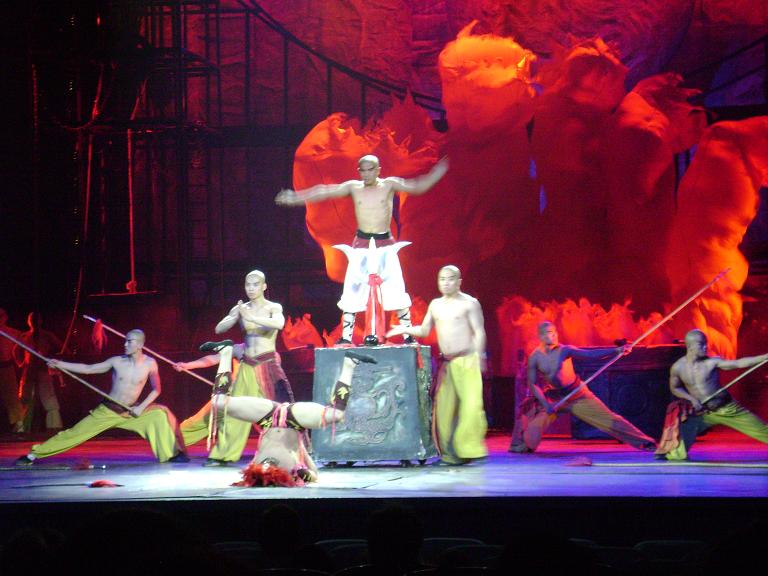Though our wake-up call was set for 6:30 this morning, I was up at 5:30 after a full night’s sleep. I went ahead and SSSed, and got down to breakfast at about 6:10. The restaurant didn’t open until 6:30, so I sat outside the entrance until then.
This totally Type A man came down at 6:20, and kept grunting and pointing to his watch, trying to let the world know that he had to be somewhere soon, and couldn’t be bothered with something as mundane as opening hours of a restaurant. They kept ushering him off to the side and near the door, as they rushed about getting things prepared for their opening. A (Western) idiot.
Speaking of Western idiots, at some point in the day I was waiting for the elevator and when the door opened for me, this businessman, and I’m guessing an executive, stepped off with two huge pieces of luggage that he was wheeling, and as soon as his bags got past the elevator threshold, he just let go of the handles and kept on walking, over toward the bellhops.
“No, really. Excuse the fuck out of me. I’ll just accommodate you and walk around your bags so that I can enter the elevator.”
I sat with Jeanne for breakfast this morning, but it was quite rushed as I didn’t leave as much time today as I did yesterday for getting dressed afterwards.
Just as we were about to leave, I noticed some people in dress clothes, for our meeting, but with tennis shoes on, and other people carrying a change of clothes. That’s when I remembered that we were going directly sightseeing after our morning business meeting today. Oh well. What I had on wouldn’t be uncomfortable, but I sure wished I’d remembered to at least bring my tennis shoes.
Our meeting this morning was great! We visited the Digital Industry Development Base at Shijingshan District. This building was very cool. Lots of tunnel halls. We received an introduction to the building and their work, and then went to an awesome conference room, where the meeting began after five minutes of time to have some tea and fruit.
When Linda was invited to the podium to introduce us, they played some star wars sounding music. This place had a very playful ambiance to it. After her introduction, she gave her short presentation on the STC.
Professor Lai spoke nextby now he’s a big fan of ours, and he really seems like a pleasant man. I really like the young man who was interpreting on their behalf today. He was the one who gave us the introduction to their office, using a huge wall display in their lobby area.
What I liked about him was that it was obvious that he wasn’t translating word-for-word, and not only that, he injected language that you were quite sure the person speaking didn’t use. For instance, one time he said something like, “We’re happy to have you guys here.”
Next we watched a video introduction to the Cyber Recreation District (CRD). Though the work in the video was very, very interesting, from a technical communication perspective it was quite ineffectivewith all due respect. It was in Chinese with English subtitles, which I very much appreciated, but the subtitles went by so fast that even if you could finish reading the one on the current screen, you absolutely did not have time to look up and see what was happening in the video.
I missed a couple of them, and I know from going to Foreign films, that I read the subtitles much, much faster than the average bear, so I would say, in general, most people were not going to even be able to get through the subtitle before the frame changed. Unfortunate.
Kent Taylor, from our delegation, gave a presentation here on a product his company sells to help in ensuring quality technical information. It basically is a text analyzer and reporter.
After his presentation, we had one more short presentation, because time was limited, which was about outsourcing, but those in our delegation who I asked about it didn’t understand it either.
The meeting ended after that, and we were treated to a tour of the building, out of which several companies that are part of CRD; that is, who got their start and some funding from CRD, run their businesses. We visited a company that develops and sells games for mobile devices. They have quickly become China’s leading gaming company.
In the first room we visited, after a brief introduction from the manager, we were ushered to the back of the room to see a demo. This room housed about 18-20 programmers who sat at very close-quartered desks. The temperature on the wall thermostat read 26° C (79° F), and the blasting heat was the first thing I noticed when I walked into the room. My successive thoughts were:
- My god it’s hot in here.
- I’m surprised all of the computers can keep running in this heat.
- These workers must be so hot. I could never work in this heat.
- My goodness; that guy has a jacket on. And the guy next to him, a sweater. And the guy next to him, a long-sleeved turtle neck shirt, with a coat, but the coat is hanging on the back of the chair.
- This is both a figurative and a literal example of a sweat shop.
I’m guessing the employees were comfortable, as it’s not like anyone was making them keep jackets or sweaters on.
We could see their computer monitors as we moved about the room. Some were programming. Some were testing programs, and one guy was drawing an animated figure on an electronic pad on his desk, and it was rendering up on his monitor.
After the demo of a game on a monitor in this room, we visited another room across the hall where a different game by the same company was being developed. In this room, the manager (the same one who had told us what was going on in the other room), did the same here, and then downloaded the game that this group was developing onto the cell phones of a few folks in our delegation.
The final office area we visited contained programmers who were either working more collaboratively, or were getting ready to go to lunch, as several had gathered around one desk. The manager explained that this group was writing the code that differentiates the different levels of games as you become more proficient in them and move to higher levels.
We actually did our gift exchange outside by the bus, as we hadn’t really alloted time for it inside. From there we drove to The Forbidden City, where we had lunch at the Xinyi Palace Restaurant, right at the gate of the city. Chinese food, lazy Susans, and chopsticks. What else did you expect?
Oh, this was different: our hostesses were in traditional Chinese garb:
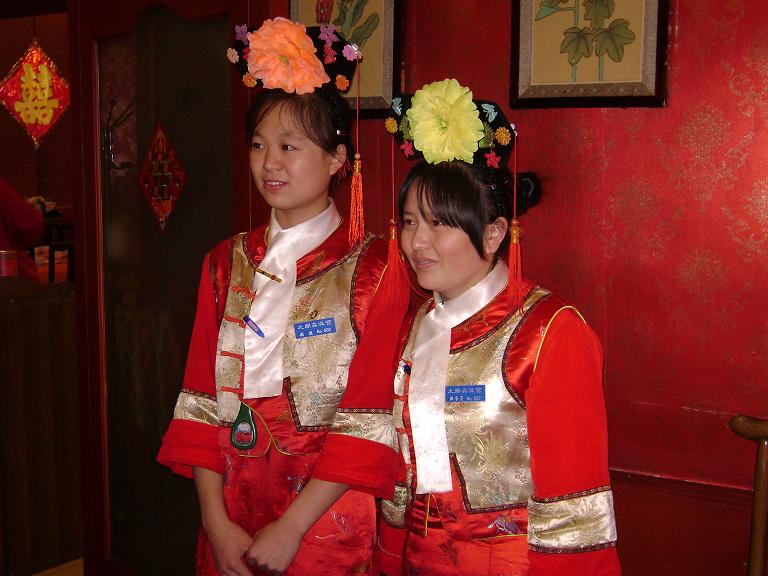
Richard, the local People to People guide who’s been with us all week, also acted as our Forbidden City tour guide. Here I am overshadowed, literally, by the Forbidden City. (As I should be.)
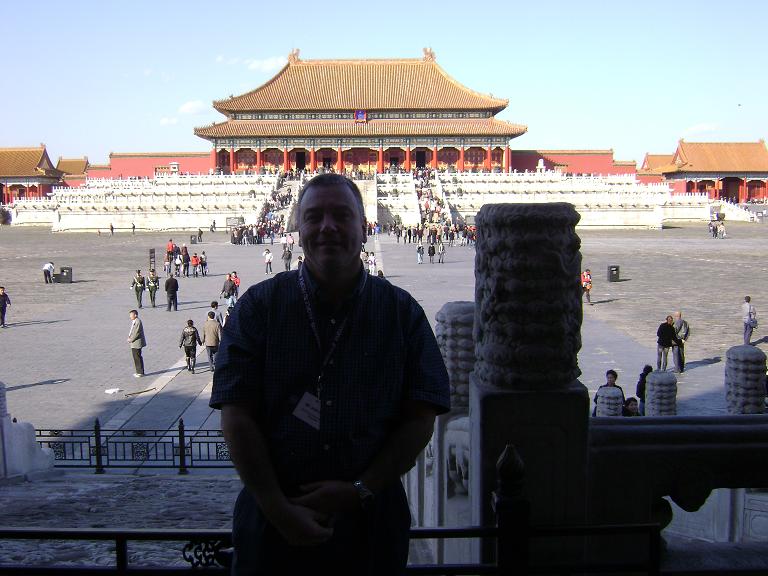
Richard explained things like the significance of the stone dragons (a symbol of power) at the entrance:
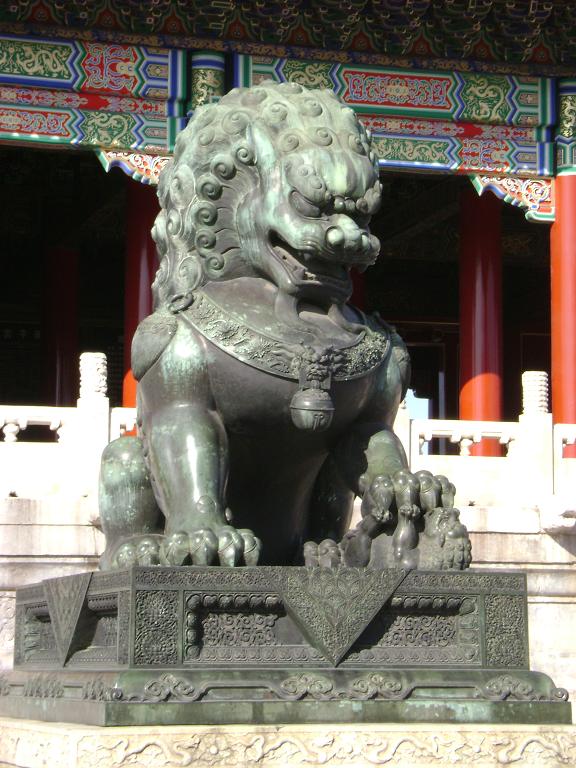
Most of the structures in the Forbidden City were restored last year. I was struck by the vibrant colors in that area above and behind the dragon and got a close-up shot of it:
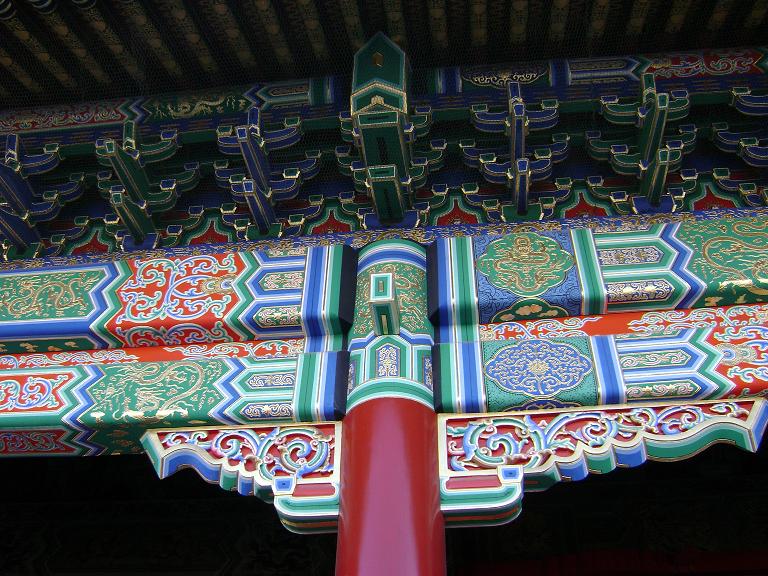
I loved this sort of tortoise dragon mixed breed:

We exited through the garden of the Forbidden City, where there was this stunning pagoda:
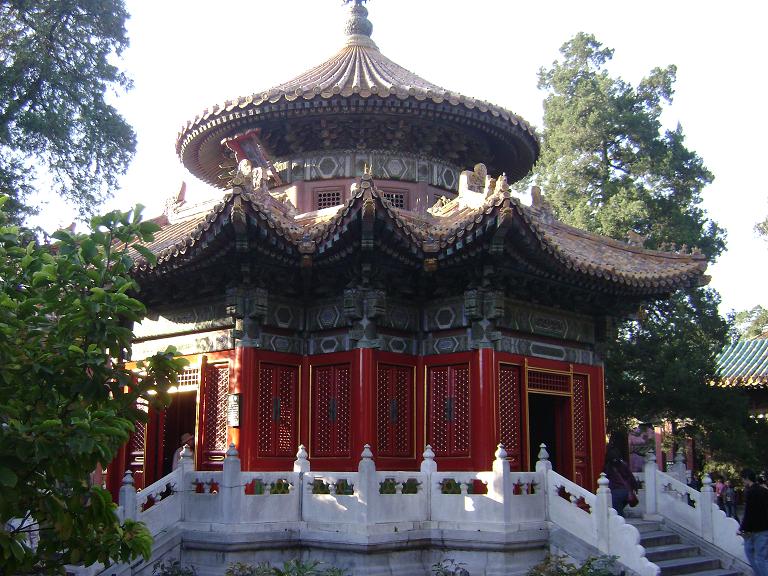
Dinner was on our own this evening, and I actually skipped it. Earlier in the week, Shawn mentioned that there was a show on in Beijing right now called “The Legend of Kung Fu.” It was like a Broadway play and it had 7 scenes:
- Scene 1. Initiation: The little monk arrives at the temple, and is initiated into the monastery and given the name Chun Yi (the pure one).
- Scene 2. Learning: The little monk is studying Zen and Kungfu very hard, years have gone by, the boy becomes a man.
- Scene 3. Casting: After many years of hard training, our monk Chun Yi’s body turns to iron.
- Scene 4. Illusion: Chun Yi chases the beautiful fairy he has created in his mind, and hence cannot continue with his Buddhist practices.
- Scene 5. Remorse: The monk Chun Yi loses his way of Buddhist practices, and suffers from great remorse.
- Scene 6. Temple Gate: Passing through the temple gate is a glorious ritual for a monk, Chun Yi must accomplish this final task to become a warrior monk.
- Scene 7. Epilogue: The old master passes on the stave, and Chun Yi becomes the Abbot.
Here are a couple of pics I snapped before the lady said to me, “No photo.” (Shawn had told us we were allowed to take photos as long as we didn’t use a flash. Oh well.)
